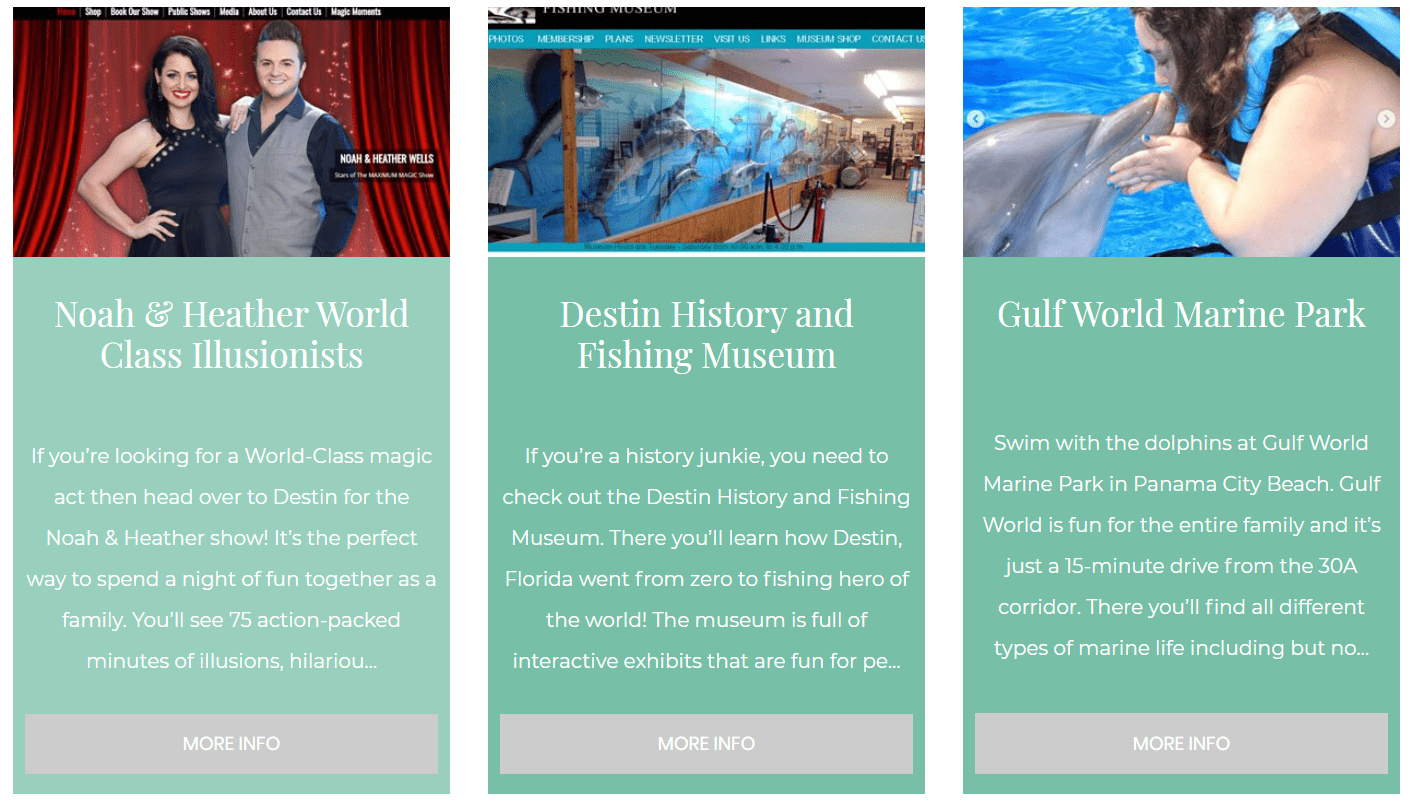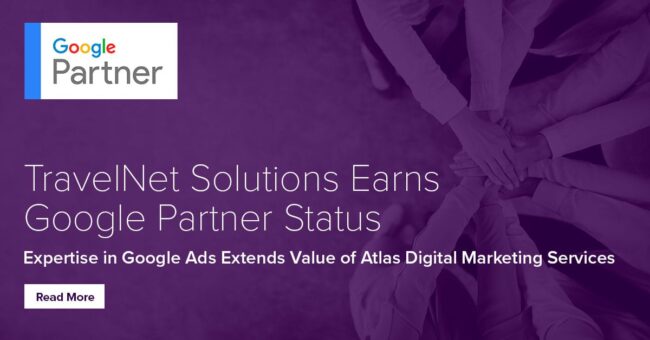How to Create a Content Strategy for Your Property

Content marketing remains one of the most effective ways to reach and connect with travelers, drive website traffic, build trust, and increase online reservations through your property website.
As people spend more time online than ever before researching properties, learning about cities, and talking to their friends about past experiences before making future travel plans, business owners in the travel and hospitality industry are forced to work harder to position themselves and their businesses as trusted resources that travelers can turn to when they need help.
Creating and publishing content is an easy and proven way to start building more authority, influence, and trust with your target audience.
Without a clear strategy in place however, you can waste a lot of time writing and publishing blog posts that won’t do anything to help your business grow.
This how-to resource will provide you with the tips, processes, resources, and best practices needed to develop an ROI-driven content marketing strategy for your property.
1. Know Your Audience
 To build an effective content strategy for your property, you need to start by making sure you have a firm grasp on who it is that you’re ultimately trying to reach. Being able to create great blog content will be crucial to your success, but it’s not nearly as important as knowing how to create great blog content for the right people.
To build an effective content strategy for your property, you need to start by making sure you have a firm grasp on who it is that you’re ultimately trying to reach. Being able to create great blog content will be crucial to your success, but it’s not nearly as important as knowing how to create great blog content for the right people.
As a property manager, it’s your job to have a crystal clear understanding of who your audience is, what their pain points are, what questions they’re asking, what they care about, and where or how they’re spending the majority their time online.
There are two steps you can take to ensure that you know the audience you’re trying to reach and write for.
First, spend time answering the following questions about your ideal guests:
- Who is your ideal guest? What are the main demographics of your target audience?
- What motivations do they have for booking a stay at your property?
- What activities or experiences are they most interested in?
- What questions do they ask you? What objections do they have?
- What makes them come back to stay with you again?
- What pain points do they have in their lives that you help solve?
- What are their hobbies and interests?
- What other brands and businesses do they support?
- Where do they spend their time online (you can answer this question by digging into your own social analytics. Here are some tools that you can use.
- What other blogs are they reading or what other websites are they visiting regularly?
Second, spend time developing 2-3 marketing personas that represent people in your target audience. Personas are, “fictional, generalized characters that encompass the various needs, goals, and observed behavior patterns among your real and potential customers” (Hubspot).
To learn more about what marketing personas are and why they are important for your business, dig into this blog post from Hubspot. After you have a better understanding about personas, use the free template referenced in the blog post to create personas that represent 2-3 different versions of your ideal guest.
Knowing who you’re trying to attract and target will ultimately help you develop stronger blog post ideas and better-performing blog posts over time.
2. Understand Your Why
The next step in building an ROI-driven content strategy is taking the time to understand why you’re investing in content in the first place. In other words, what are you hoping to achieve? If you’re like most property owners, you’re choosing to invest in content for one or more of the following reasons:
Reason #1: You want to boost awareness. You want to use content as a way to connect and engage with more ideal guests. You want to use content to expand your reach and start nurturing relationships with people that have never heard about your property before.
Reason #2: You want to boost website traffic. Website traffic has fallen flat, and you’re looking for new ways to bring it back to life. You know that blogging can work, but you’ve never really taken it seriously or developed a clear strategy that can be implemented by your team.
Reason #3: You want people to trust you. You want to position yourself as a trusted resource in your area. When people go to search more about lodging and things to do in your area, you want them to land on blog posts that were written by you and your team. You want to build trust with your content so that when they’re ready to book their vacation, they won’t hesitate to choose you and your property.
Reason #4: You want to capture more leads. You’re getting website traffic, but you’re not capturing email addresses or other contact information. You’re looking for a more enticing and compelling way to get people to give you their email address. At the same time, you also want to provide them with value and start helping them through the decision-making process.
Reason #5: You want to qualify leads and nurture relationships. You want to use content as a way to qualify leads and nurture relationships with interested travelers who keep returning to your site looking for answers to their questions.
Reason #6: You want to drive more online reservations. You want what every property manager wants: to be able to use your website as an effective tool for driving more reservations each month.
The biggest mistake you can make when it comes to content marketing is to simply blog for the sake of blogging. If you don’t know why you’re spending the time creating new content each week, or you don’t know what you’re working toward, you’re wasting your time.
Knowing your why can keep you focused, motivated, and accountable to your goals.
3. Set Clear Milestones & Goals
Once you have a clear idea about why you want to invest more time and energy into content marketing, the next step you need to take is to set a handful of specific and measurable milestones and goals that you can work toward along the way.
The milestones and goals you establish will depend on your business and the reason or reasons you identified in the previous section, but here are some examples:
Content Production Milestones & Goals
- Hire content team by the end of ____
- Finalize content strategy within X weeks
- Finish first round of blog post ideas by ____
- Publish a blog post every week without any gaps for X months
- Get 1 month ahead in terms of blog post creation and scheduling
- Have X blog posts published by the end of the quarter
- Finalize content production processes and best practices within 90 days
Performance Milestones & Goals
- Increase website and blog traffic by X% in 1 month
- Capture X new leads from blog posts by the end of the quarter
- Grow social following by X followers within 90 days of implementing content strategy
- Get at least X comments or likes on the social media updates you publish that promote blog posts
- Drive X new online reservations each month that can be attributed as being directly from blog content
Content marketing can be overwhelming at times. Creating achievable (but still challenging) milestones and goals that make sense for your business and align with your reasons for investing in content in the first place will help you stay productive and focused along the way. It’ll also allow you to better recognize the progress you’re making. Make sure to take time to celebrate the small wins, learn from failures, and update your strategy as needed.
Note: In order to establish and track some of the goals mentioned above, you will need access to whatever analytics platform you have connected to your website (such as Google Analytics). If you don’t manage this yourself, reach out to your outsourced webmaster or internal IT team member.
Want to dig deeper into content, ROI and measurement? Explore these resources:
- How to Measure Your Content Marketing ROI (The Metrics That Matter)
- Actionable Marketing Strategies to Prepare You For What’s Next
4. Decide on Blog Themes

When it comes to developing blog posts on your property website, the options are seemingly endless. It can be somewhat intimidating to anyone who hasn’t invested seriously in content marketing before. As you get further into the development of your content strategy, you might start asking yourself questions like:
- What should we write about?
- How do we come up with new ideas?
- What do we want to be known for on our blog?
- What value can I actually share with my audience?
- How can I make sure I’m moving forward with the right ideas for the personas I created?
To answer these types of questions, you’ll want to spend some time deciding on a few main blog themes that can be used and referenced at every stage of the content marketing production process—from ideation and blog writing to promotion and blog navigation.
Blog themes help you focus your efforts and attention on only a handful of topic areas that your target audience will care about. Blog themes allow you to be more strategic when it comes to planning and organizing content. Instead of having infinite opportunities to write about every topic relating to travel, you instead focus on owning just 3-4 areas on your blog.
Let’s look at 2 examples:
Example #1: If you cater to a lot of families, your blog themes, or topic areas, might look something like this:
- Tips for Traveling/Vacationing with Kids
- Family-Friendly Activities to Do and Places to Visit in The Area
- Stories from Happy Guests Who Brought Their Families
- Getting to Know Our Resort
Example #2: If you cater to a lot of newlyweds, your blog themes, or topic areas, might look something like this:
- Tips for Planning Your Dream Honeymoon
- Fun Day Trips and Local Excursions Worth Trying
- Stories from Happy Couples
- Romantic Places to Explore Away from the Crowds
For each of these examples, any blog topic you came up with would need to fall underneath one of the blog themes you created.
Creating specific blog themes will make it easier for you to come up with ideas that align with the interests and needs of the specific type of person you’re trying to connect with and convert.
5. Brainstorm Ideas & Build Your Calendar
Once you have your blog themes established, you’re ready to start brainstorming ideas and building your editorial calendar.
Here are some places you can source ideas from:
- Your mind: Think about each of your blog themes and try to come up with 15-20 ideas that can live beneath each one.
- Your team: Share your blog themes with your team and ask them to each contribute 10-15 ideas.
- Your guests: Send a survey out to past guests to ask them what they loved doing and seeing while staying at your property. You can also reach out to past guests you think would be interested in sharing their vacation story in the form of a blog post (written by you or them).
- Your competitors: See what kinds of topics your local competitors are writing about on their blogs, and if there are any opportunities to expand on topics or provide a different perspective.
- Your Google searches: Search Google for topics that relate to your blog themes and see what kind of articles and blog posts you find. Use these posts as inspiration for your own future blog posts. Don’t steal the exact idea or headline—make it your own!
- Other Google Tools: You can also use tools like Google Trends and Google Keyword Planner to uncover timely opportunities and topics that receive a lot of search demand.
- Your favorite local blogs or websites: See what local news stations, radio stations, community groups, and other websites in the area are writing about and sharing with their followers and customers.
- Your social media followers: See what kind of content your followers are sharing with their networks.
Once you have a well-established list of ideas, start prioritizing them and building them into an editorial calendar. You can use a tool like CoSchedule, Trello, or Airtable to create a blog calendar that can be managed and accessed by your entire team.
6. Pick Your Players
 As you continue working on building out your content calendar, you should start thinking about the people on your team (or outside of your existing team) that you’ll need to help you with executing on your new content strategy. In a perfect world you would have a team that looked something like this:
As you continue working on building out your content calendar, you should start thinking about the people on your team (or outside of your existing team) that you’ll need to help you with executing on your new content strategy. In a perfect world you would have a team that looked something like this:
- A researcher to come up with ideas
- A writer to produce blog posts
- A photographer/designer to produce graphics for the blog post and promotion
- An email marketer to help promote your blog content
- A social media specialist to share your content organically across your social pages
- A promotion/outreach specialist to help you promote your content once it goes live
- A project manager who can keep everyone on task and measure progress and performance along the way
If you’re like most property managers, a team like this probably isn’t feasible—at least right away. With that in mind, choose individuals from your existing team who could excel in one or more of these areas. Motivate them to help you by giving them a raise, a bonus, or some other perk or gift that you know they would love.
7. Finalize Your Processes
The last step you’ll need to take to wrap up your content strategy is to develop, finalize, and document processes for:
- Coming up with ideas
- Writing blog posts
- Creating supporting media for blog posts (photos, graphics, video, etc.)
- Uploading, scheduling, and publishing blog posts
- Sharing blog posts organically (on social, in email campaigns, in other marketing material)
- Putting money behind paid promotional and advertising efforts
- Tracking progress and measuring performance
- Repurposing blog content and updating blog content as it ages
Creating a content strategy for your property can be a long and tedious process. It’s important to have the time and resources to come up with a great marketing plan. If you’re not sure where to start and need help running your day to day marketing operations consider requesting a demo of TNS Digital Marketing to see how we can help.



